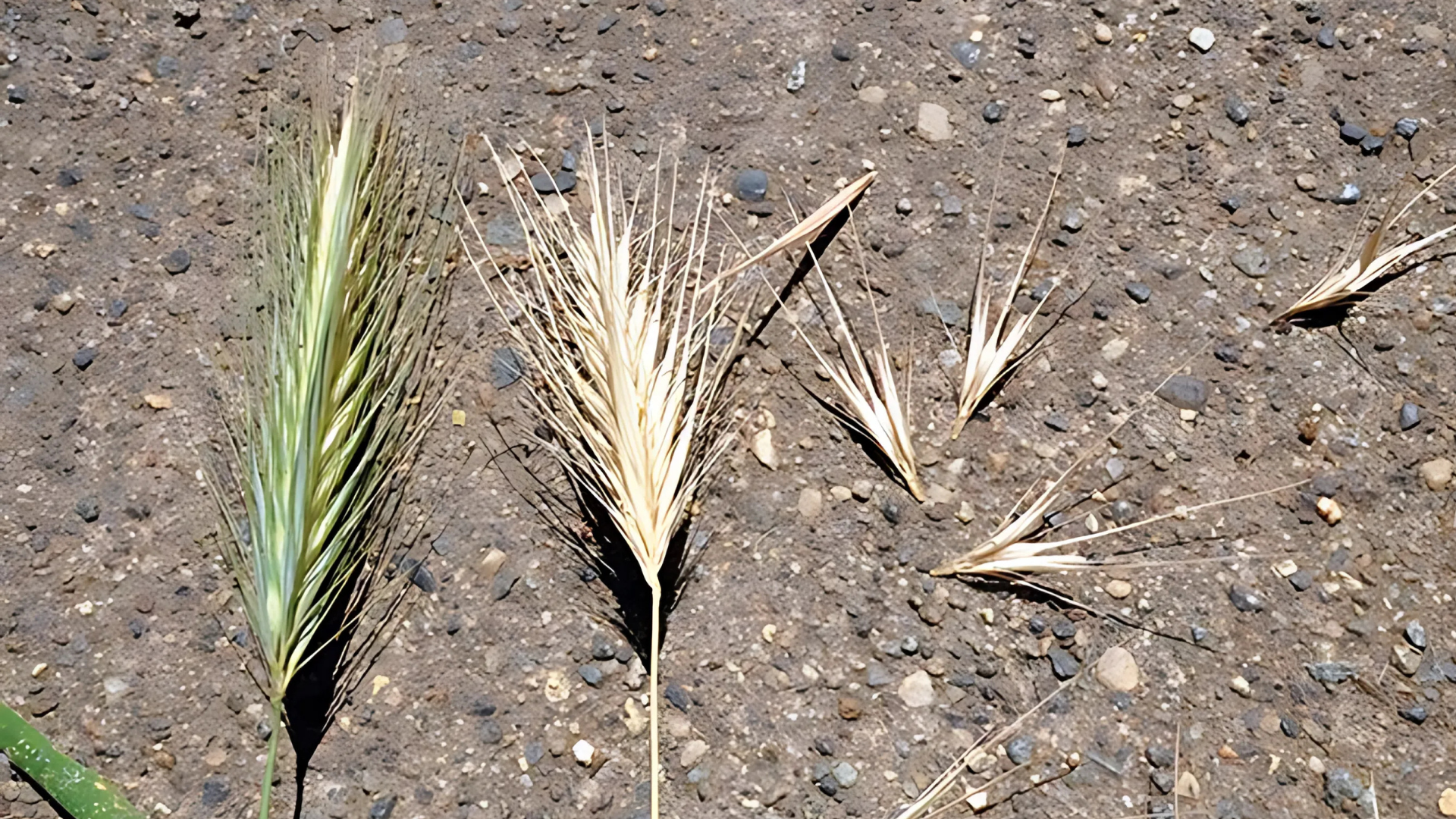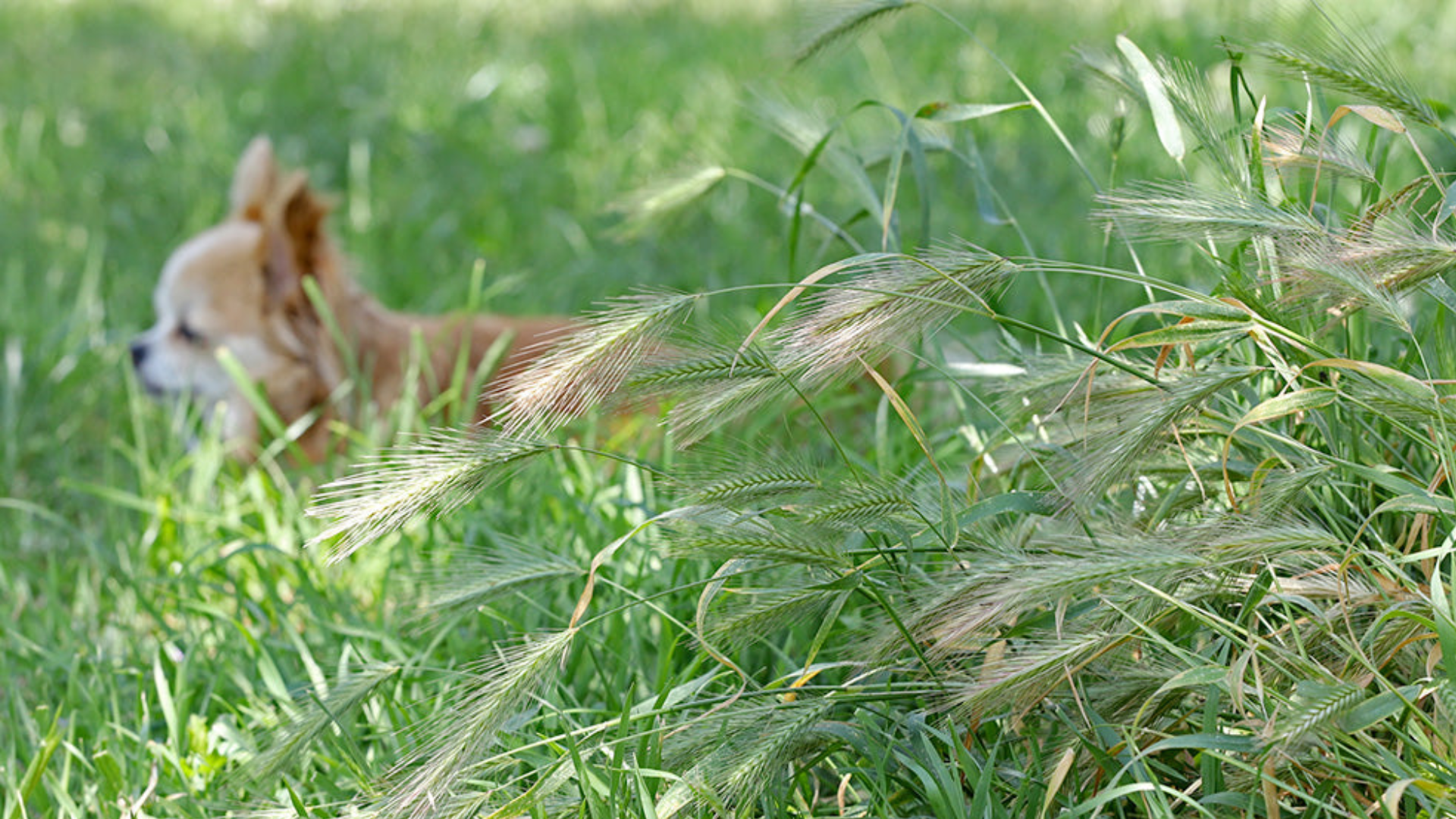Foxtail grass appeared in my yard last year, and it spread rapidly. At first, I didn’t even know what it was. The seed heads looked soft, like little brushes. However, I later learned that they can be sharp and even dangerous, especially for pets. That’s when I knew I had to do something about it.
Foxtail grass grows rapidly and can take over if left unchecked. It pops up in bare spots, along fences, and even in gravel areas. It’s not just a weed—it’s a real problem.
In this blog, I’ll show you how to spot foxtail grass and how to keep it from spreading. These tips are straightforward and don’t require specialized tools. If you’ve seen this grass in your yard, it’s best to act now. Let’s take a look at what works and how to keep foxtail grass under control.
What Is Foxtail Grass?

Foxtail grass is a fast-growing weed that shows up in lawns, fields, and along roads. It gets its name from the seed head, which looks like a fox’s tail. Initially, the seed heads may appear soft and fuzzy. But as they dry out, they turn stiff and sharp.
Foxtail grass is a problem because it:
- Spreads quickly
- Takes over bare spots
- Hurts pets and animals
- Is hard to pull out once it’s big
There are three main types of foxtail grass:
- Yellow Foxtail – Thin stem, small bushy top
- Green Foxtail – Bright green with a long seed head
- Giant Foxtail – Taller and thicker with a droopy top
Regardless of the type in your yard, the steps to control it are very similar.
How Foxtail Grass Grows and Spreads?
Foxtail grass is tough and grows fast, especially when the weather is hot and the soil is bare. It thrives in open areas where your lawn may be weak or patchy. If your yard has dry spots, dirt patches, or little footpaths where grass doesn’t grow well, those are places where foxtail will likely show up.
What makes foxtail difficult to control is its rapid spread. One plant can drop thousands of seeds, and those seeds can travel by wind, animals, shoes, or lawn tools.
Once those seeds land in a sunny spot, they grow fast. If you don’t remove them quickly, they will drop more seeds, and the problem grows each year.
You may not even notice the first few plants. But after a few weeks, you’ll see tall, grassy weeds with spiky tops. If you wait too long, the seeds dry out and get sharp. That’s when they become risky for kids, pets, and anyone walking through the grass.
Why Foxtail Grass Is a Problem?
Foxtail grass may look harmless at first, but it causes more trouble than most weeds:
- It Spreads Fast: It grows in almost any soil and can reach several feet in height. If you wait too long, you’ll see it everywhere.
- It Hurts Pets: The sharp seed heads can stick in your dog’s nose, ears, or paws. They can even cause infections or need vet care.
- It Crowds Out Lawn Grass: It takes over weak areas and stops new grass from growing. Over time, your yard can turn into a foxtail field.
- It’s Hard to Kill Once It’s Grown: Small foxtail plants are easy to pull. Large ones have deep roots and are more difficult to remove.
How to Identify Foxtail Grass?

Foxtail grass looks like a regular weed until it starts growing taller than your lawn. The leaves are wide and flat with small hairs at the base. The seed head is what gives it away. It stands upright at the top and resembles a bottle brush or the tail of a fox.
The seed head may be green, yellow, or light brown, depending on the type. As the plant matures, the head turns dry and stiff. This is when it becomes dangerous for pets and harder to remove.
The roots of foxtail grass are shallow at first, but they get deeper as the plant grows taller. That’s why early removal is key. You want to pull or kill it before the roots spread and before seeds drop.
Foxtail Grass and Pets: Why It’s a Serious Problem

Foxtail grass isn’t just a yard problem; it’s a serious risk for pets, especially dogs. What makes it dangerous is the seed head. When the foxtail plant matures, it grows a sharp, pointed spike at the top. This spike can easily get stuck in your pet’s fur, skin, paws, or even inside the nose, ears, or eyes.
Unlike regular grass seeds, foxtail seeds don’t break down. Instead, they move deeper into the body. They can travel under the skin or into body parts, causing pain, swelling, and infection. If left untreated, foxtails can lead to serious health problems and may even necessitate surgery for removal.
Even small amounts of foxtail grass in your yard can pose a risk. These seeds are small, light, and can hide easily in tall grass or weeds.
Getting Rid of Foxtail Grass: Step by Step
A simple plan to help you take control of foxtail grass in your yard:
Step 1: Pull It by Hand
If you only see a few foxtail plants, pulling them out by hand is the best way to start. The sooner you do this, the better. Young plants are easier to pull, and you’re less likely to spread seeds.
Water the ground a little first to soften the soil. Grab the plant at the base and pull straight up. Try to remove the entire root so it doesn’t regrow. Throw the plants away in a sealed bag; don’t add them to your compost pile.
If the plants have already formed seed heads, wear gloves and long sleeves. You don’t want the seeds sticking to your clothes.
Step 2: Mow Before Seeds Form
Regular mowing can help stop foxtail from spreading. If you mow before the seed heads appear, the plant won’t be able to drop seeds. Keep your grass a little taller than usual. Taller grass shades the soil, making it harder for foxtail seeds to sprout.
Use a mower with a bag to collect clippings, especially if any seed heads have formed. This keeps seeds from falling back into your lawn. Mow once a week during the growing season to stay ahead of new growth.
Step 3: Apply Pre-Emergent in Early Spring
A pre-emergent herbicide is a spray or granule that prevents weed seeds from germinating and growing. It doesn’t kill the foxtail plants you already see, but it stops new ones from popping up.
Apply pre-emergent herbicide in early spring when the soil temperature reaches approximately 55°F (13°C). This is when foxtail seeds start to grow. Water your lawn lightly after applying to help it soak in.
Avoid raking or digging the soil after use, as this can compromise its effectiveness. You can use a pre-emergent herbicide once a year as a way to block foxtail before it starts growing.
Step 4: Spot Spray Grown Plants
If you missed the early window and foxtail is already growing, a post-emergent herbicide can help. This type of spray kills the plants you see above the soil. It works best when the weeds are still small and actively growing.
Be sure to read the label. Some sprays can harm your lawn if used excessively or at the incorrect time.
Only spray on calm days and avoid using it when the temperature is above 85°F. Also, refrain from mowing for a few days after spraying so the weed killer has time to take effect.
How to Keep Foxtail Grass from Coming Back?
Once you get rid of foxtail, you want to keep it from coming back. The simple ways to protect your lawn are:
- Fertilize Your Lawn: Feed your grass 2–4 times per year with a balanced fertilizer. Healthy grass grows thick and strong, blocking weeds.
- Water Deeply, Not Often: Water your lawn once or twice a week, giving it a good soak. This helps the grassroots grow deep and keeps foxtail seeds from sprouting.
- Aerate Your Soil: Aerate your soil once a year to break up compacted soil. This helps water and air reach the roots, keeping your lawn healthy.
- Use a Pre-Emergent Every Spring: Make it a yearly habit. Stop foxtail seeds before they sprout and save yourself a lot of work later.
What to Avoid When Controlling Foxtail?
Controlling foxtail grass takes time, patience, and the right steps. But just as important as what you should do is knowing what you shouldn’t do. Some common mistakes can exacerbate the problem by helping foxtail spread even further.
- Don’t wait too long: Once foxtail forms seed heads, it spreads quickly. Pull or treat it early before seeds drop.
- Don’t mow dry seed heads: Mowing spreads the seeds all over your lawn. Hand-pull and bag mature plants instead.
- Don’t use the wrong spray: Foxtail is a grassy weed, not a broadleaf weed. Always check that the herbicide targets grassy weeds.
- Don’t skip pre-emergent: In early spring, apply a pre-emergent to prevent seeds from germinating. It’s easier than dealing with full-grown plants later.
- Don’t leave bare spots: Open soil invites foxtail. Reseed grass or cover the ground with mulch or plants.
- Don’t compost foxtail: The seeds can survive and spread. Always bag and trash foxtail plants.
These tips help stop foxtails for good.
Conclusion
Foxtail grass can be a significant problem if it isn’t stopped early. It grows fast, spreads seeds quickly, and can take over your yard in just one season.
Additionally, the sharp seed heads can harm your pets and even necessitate veterinary visits. That’s why it’s so important to take action before it gets out of control.
The good news is you don’t need special tools or fancy products. With simple steps like hand-pulling, mowing, and using the right sprays at the right time, you can get ahead of foxtail grass. Keep your lawn thick, water it properly, and fill in any bare spots. These small actions help prevent weeds from taking hold.
Check your yard often, especially in spring and summer. If you spot foxtail early, it’s much easier to deal with. Stay on top of it, and you’ll keep your lawn clean, safe, and foxtail-free all season long.













